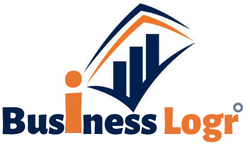
Introduction
When it comes to purchasing a home, one of the key factors to consider is the down payment. While there are various types of mortgages available, conventional loans remain a popular choice for many homebuyers. However, it’s essential to understand the minimum down payment requirements associated with conventional loans to make informed decisions. In this comprehensive guide, we will delve into the details of conventional loans and explore the minimum down payment requirements.
What are Conventional Loans?
1.1 Definition of Conventional Loans Conventional loans are mortgage loans that are not backed by any government agency such as the Federal Housing Administration (FHA) or the Department of Veterans Affairs (VA). These loans are typically offered by private lenders, including banks, credit unions, and mortgage companies.
1.2 Key Features of Conventional Loans Conventional loans offer several advantages, including flexible terms, competitive interest rates, and the ability to avoid private mortgage insurance (PMI) in certain cases. They are available for various purposes, such as purchasing a primary residence, second home, or investment property.
Minimum Down Payment Requirements for Conventional Loans
2.1 Traditional Minimum Down Payment Requirement The traditional minimum down payment requirement for a conventional loan is typically 20% of the purchase price. This means if you’re buying a home worth $300,000, you would need to provide a down payment of $60,000. This requirement helps lenders mitigate the risk associated with the loan.
2.2 Lower Down Payment Options While 20% is the standard down payment requirement, conventional loans also offer options for lower down payments. These options may be beneficial for borrowers who do not have the means to provide a larger down payment upfront.
2.3 Private Mortgage Insurance (PMI) If you opt for a conventional loan with a down payment lower than 20%, you will usually be required to obtain private mortgage insurance (PMI). PMI protects the lender in case the borrower defaults on the loan. The cost of PMI varies based on factors such as the loan amount, credit score, and loan-to-value ratio.
Factors Affecting Minimum Down Payment Requirements
3.1 Credit Score Your credit score plays a significant role in determining the minimum down payment requirement for a conventional loan. A higher credit score generally results in more favorable terms and potentially lower down payment requirements.
3.2 Loan-to-Value Ratio (LTV) The loan-to-value ratio represents the loan amount compared to the appraised value or purchase price of the property, whichever is lower. Lenders may consider a lower down payment if the LTV is within an acceptable range, especially if you have a good credit score.
3.3 Occupancy Type The occupancy type of the property you are purchasing can impact the minimum down payment requirement. Conventional loans may have different down payment requirements for primary residences, second homes, and investment properties.
Benefits of a Larger Down Payment
4.1 Lower Monthly Mortgage Payments Providing a larger down payment reduces the loan amount, resulting in lower monthly mortgage payments. This can lead to improved cash flow and more financial flexibility.
4.2 Avoidance of PMI By meeting or exceeding the 20% down payment requirement, borrowers can avoid the additional cost of private mortgage insurance (PMI) altogether, potentially saving a significant amount of money over the life of the loan.
4.3 Improved Loan Terms A substantial down payment demonstrates financial stability and reduces the lender’s risk. This may lead to more favorable loan terms, such as lower interest rates and reduced closing costs.
Conclusion
Understanding the minimum down payment requirements for conventional loans is crucial for prospective homebuyers. While a 20% down payment is the traditional requirement, there are options available for lower down payments, albeit with the inclusion of private mortgage insurance (PMI). Factors such as credit score, loan-to-value ratio, and occupancy type influence the minimum down payment. By providing a larger down payment, borrowers can enjoy benefits like lower monthly mortgage payments, avoidance of PMI, and improved loan terms. It’s essential to consult with lenders and explore different options to determine the most suitable down payment approach based on individual circumstances.




